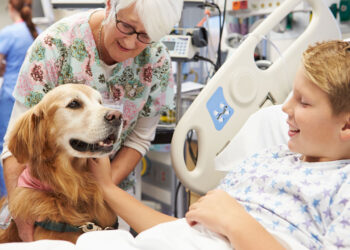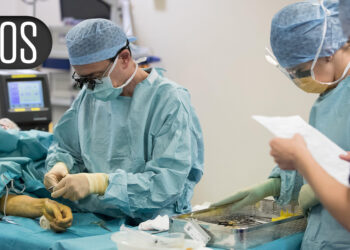Copies of a freshly printed new document were placed on speaker podiums and tables reserved for moderators at this year’s Society of Thoracic Surgeons (STS) Annual Meeting in Los Angeles. The society has a new policy aimed at addressing unprofessional and disruptive behavior among members at conferences and events.
The STS adopted its new Policy for Respectful Scholarly Discourse in August 2024 and presented it publicly for the first time at the conference. A similar initiative, launched by the European Association for Cardio-Thoracic Surgery (EACTS) with its Members’ Guide to Disruptive Behaviour, was released in October 2024.
Although the demographic of the specialty historically has lacked diversity, it has made strides in recent years in terms of gender and ethnicity, explained Mara Antonoff, MD, a thoracic surgeon at the MD Anderson Cancer Center in Houston, who led the STS’s policy working group. Women now make up 17% of cardiothoracic surgical faculty, up from just 2% a couple of decades ago, although the specialty still lags behind surgical faculty overall. Black and Hispanic physicians account for only 3% and 5% of all cardiothoracic surgeons, respectively.
But that slowly increasing diversity has exposed some unconscious biases within the workforce.
“Anyone is capable of errors in judgement when it comes to professionalism, but certain groups tend to be more frequent recipients,” reported Antonoff. At previous conferences, for example, Antonoff and others noted that women were more frequently interrupted than men (13.0% vs 7.7%) or addressed by an inappropriate title (45.0% vs 25.0%).
“The best way to mitigate those disparities is to hold everyone to the same high standard of professionalism,” she said. Everyone should be “addressed appropriately by their professional title,” she added, but titles aren’t “always used equitably across demographics.”
Unprofessional Conduct More Common in Surgery
Surgeons have a reputation for being more prone to aggressive or unprofessional behavior, and research shows that it is not entirely unearned. Although just 9.1% of physicians overall had been reported by colleagues for unprofessional behavior, surgeons had the highest rate of reports, at 13.8%, according to a study published last year in JAMA Network Open.
The uniquely high-stakes, high-stress environment of surgery may create unique stressors that cause people to lash out more frequently, said William Cooper, MD, an epidemiologist at Vanderbilt University in Nashville, Tennessee, who led that study. However, he pointed out, the study also shows that 86% of surgeons have never had serious issues with colleagues.
Policies such as those adopted by professional societies can be helpful in improving the culture of medicine and the way people interact with each other in professional settings. The EACTS developed its policy in response to some worrying statistics about bullying and harassment within the specialty, said Brendan Eley, chief executive of the society.
Bullying and Harassing Trainees
Research in the United Kingdom, for example, has shown that trainees in cardiology experience bullying at almost double the rate of all other medical specialties. Senior physicians also reported high rates of harassment and being undermined, with women and ethnic minority physicians reporting the highest rates. Some surveys have found high rates of sexual harassment and even assault of female surgeons in the operating room.
A survey of the society’s members shows how prevalent these issues are; 80% of respondents said they had either experienced or witnessed disruptive behaviors in the workplace, and 29% said they thought they may have displayed disruptive behaviors themselves. A large majority of respondents said disruptive behaviors had affected their job satisfaction, the overall work environment, or the quality of patient care.
“We realized we didn’t have a policy in place to deal with this,” said Eley.
A highlight of the policy — developed by a working group and assisted by a consultant with expertise in diversity, equity, and inclusion — is the list of examples of disruptive behaviors, Eley explained. It includes obvious examples, like verbal abuse and intimidation, as well as more subtle ones, like microaggressions, deliberate exclusion, and gaslighting.
“Within the community of surgery generally, and maybe cardio-thoracic surgery in particular, there is an all-too-common acceptance of personality methods among senior surgeons, so that one might wrongfully assume that this is the way it is,” he said. “We wanted to lay down a list of what bad behavior looks like, and reinforce and promote good behavior.”
Reporting Incidents
The policy also sets out ways to report and deal with disruptive behavior. It encourages people to first try to handle the situation themselves, but if that fails, or if someone does not feel comfortable doing so, they can report it directly to Eley, who can initiate a formal investigation, if necessary, and take action to provide mediation, counseling, or training to address the issue.
“It signals how seriously the society takes this,” he said. “We provide direct access to the top of the organization to resolve it.”
Unprofessional behavior or bullying in the clinic or operating room, however, is outside the scope of these policies. The policies of both STS and EACTS are specifically intended to address unprofessional behavior in the context of the societies’ own events, meetings, and committees.
“We’re not trying to police the world; hospitals and institutions need to have their own policies,” he said.
“If we can have a shared set of values that describe how we want to conduct ourselves, that is extremely useful,” Eley said. “Being able to articulate more clearly what professional conduct looks like is the goal of all of these activities.”
So far, the response to the policies has been generally positive, Antonoff and Eley reported. Younger members of the profession, who tend to be less tolerant of bad behavior among colleagues, have been particularly receptive, Eley added.
“They’re taking the policy back to their workplaces to show that others support them, and are using it to encourage their institutions to do something similar,” he said.
Although the complications caused by the wildfires in Los Angeles just before the meeting meant that STS was unable to formally monitor compliance with the policy, it was generally adhered to by everyone attending, Antonoff said. Formal efforts to evaluate how it is implemented will be undertaken at future meetings.
“The next step is to make sure the improvement in behavior doesn’t dwindle away,” she said. “The intent is not to penalize people who make mistakes, but to hold everyone to higher levels of professional conduct,” she added. “Don’t interrupt anyone, call everyone by the right name, treat everyone with respect, and treat everyone’s expertise and opinions with respect.”
No financial disclosures to report.
Source link : https://www.medscape.com/viewarticle/bad-behavior-medical-conferences-prompts-new-rules-2025a10003kr?src=rss
Author :
Publish date : 2025-02-11 21:30:29
Copyright for syndicated content belongs to the linked Source.














